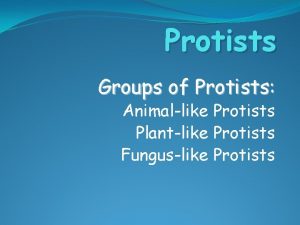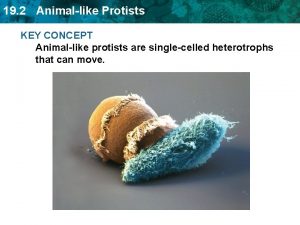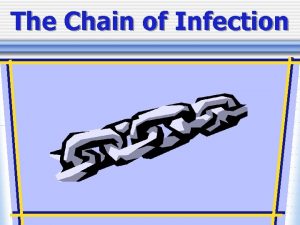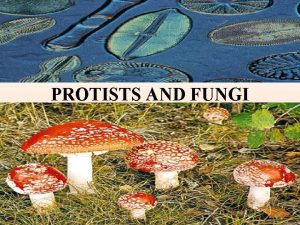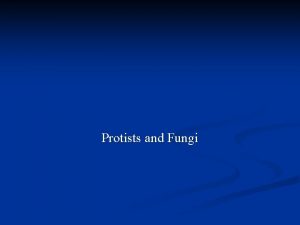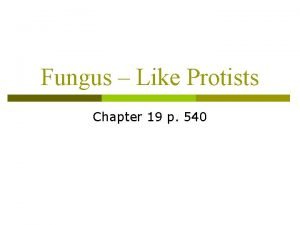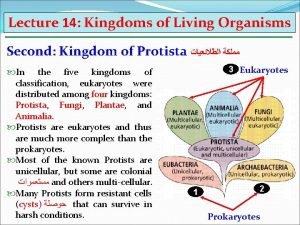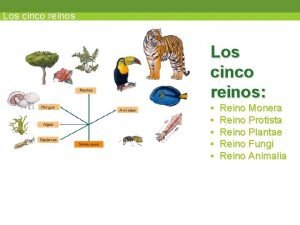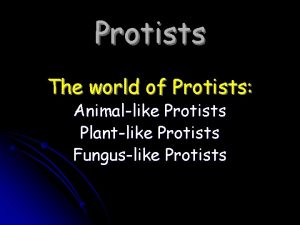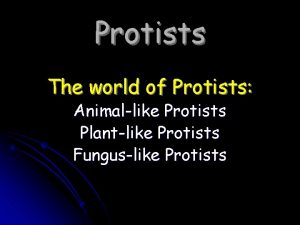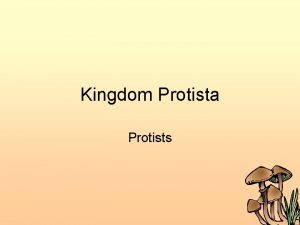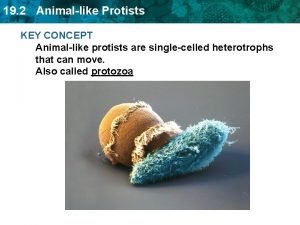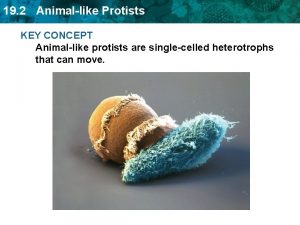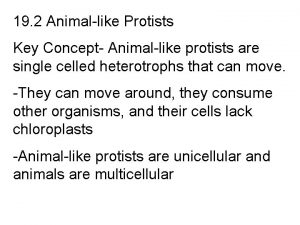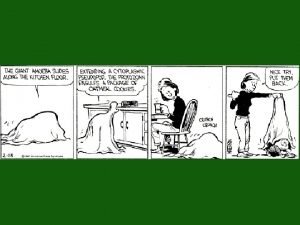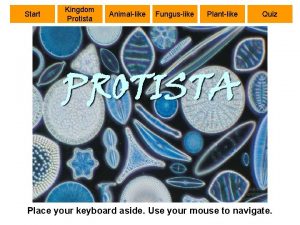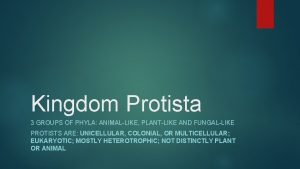Protists and Fungi Kingdom Protista Plantlike animallike or

















- Slides: 17

Protists and Fungi

Kingdom Protista • Plant-like, animal-like, or fungus-like • Heterotrophs or autotrophs • Most unicellular, some multicellular

Plant-like protists: • Algae • Photosynthetic • Basis of the marine food chain • Make most of the oxygen in the atmosphere

Plant-like protists:

Plant-like protists: Sea lettuce • Alternation of generations- organism alternates between sexual (using eggs and sperm) and asexual (using spores) reproduction

Plant-like protists: euglena • Move using flagella • Have chlorophyll for photosynthesis

Animal-like protists: • Protozoans • Move about using cilia, flagella, or false feet • Many are decomposers

Animal-like protists: • Sporozoans reproduce using spores Plasmodium – carried by mosquitoes – causes malaria

Fungus-like protists: • Slime molds: • Water molds and downy mildew:

Kingdom Fungi

What are the characteristics of fungi? Some unicellular, most multicellular Eukaryotes Cell walls made of chitin Body structure is made up of hyphae

Fungi are heterotrophs they can be: Parasites - Absorb nutrients from the living cells of a host Saprophytes - Decompose waste or dead organic material Mutualists - Live in symbiosis with another organism

Parasitic fungi: Bracket fungi Athlete’s foot

Saprophytic fungi: Mycena Shitake mushroom

Mutualistic fungi: British soldier lichen vesicular-arbuscular mycorrhiza Green shield lichen

Fungi Reproduction can be asexual: fragmentation budding spores

Fungi Reproduction can be sexual: Specialized hyphae from two individual fungi meet and form a new individual.
 Sporazoans
Sporazoans Animal-like protist
Animal-like protist Monera protista fungi plantae animalia
Monera protista fungi plantae animalia Protista mobility
Protista mobility Plantae
Plantae Eukarya plantae
Eukarya plantae 15:8 using sterile techniques
15:8 using sterile techniques Plantlike organisms that live on dead organic matter
Plantlike organisms that live on dead organic matter Old kingdom middle kingdom new kingdom
Old kingdom middle kingdom new kingdom Old kingdom middle kingdom new kingdom
Old kingdom middle kingdom new kingdom Youtube
Youtube Capital of egypt during the old kingdom
Capital of egypt during the old kingdom Protists and fungi differences
Protists and fungi differences Protists and fungi
Protists and fungi Fungus-like protists characteristics
Fungus-like protists characteristics Kingdom protists
Kingdom protists Protista prokaryotic
Protista prokaryotic 5 reinos protista
5 reinos protista
